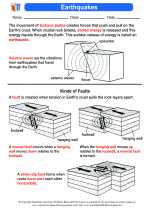Earthquakes -> celestial bodies
Celestial Bodies
Celestial bodies are natural objects in the sky, such as the Sun, Moon, planets, stars, and other objects in the universe. They play a significant role in understanding the universe and the laws of physics that govern it.
The Sun
The Sun is a massive, luminous sphere of plasma that is the star at the center of our solar system. It provides light and heat to Earth and is essential for the existence of life on our planet.
The Moon
The Moon is Earth's only natural satellite. It has a significant impact on Earth's tides and has been a source of wonder and inspiration for humans throughout history.
Planets
Planets are large celestial bodies that orbit around a star. In our solar system, there are eight recognized planets: Mercury, Venus, Earth, Mars, Jupiter, Saturn, Uranus, and Neptune.
Stars
Stars are massive, luminous spheres of plasma that emit light and heat through nuclear reactions. They are the building blocks of galaxies and the source of all heavy elements in the universe.
Other Celestial Bodies
Other celestial bodies include comets, asteroids, meteoroids, and dwarf planets. These objects play a crucial role in understanding the formation and evolution of the solar system and the universe.
Study Guide
- What is the Sun and why is it important for life on Earth?
- How does the Moon influence Earth's tides?
- List the eight recognized planets in our solar system.
- What are stars made of and what is their role in the universe?
- Describe the characteristics and significance of comets, asteroids, and meteoroids.
Understanding celestial bodies is essential for grasping the fundamentals of astronomy and the universe. By studying these objects, we can gain insights into the origins of the cosmos and our place within it.
.◂Science Worksheets and Study Guides Seventh Grade. Earthquakes

 Activity Lesson
Activity Lesson
 Worksheet/Answer key
Worksheet/Answer key
 Worksheet/Answer key
Worksheet/Answer key
 Worksheet/Answer key
Worksheet/Answer key
 Worksheet/Answer key
Worksheet/Answer key
 Worksheet/Answer key
Worksheet/Answer key
 Vocabulary/Answer key
Vocabulary/Answer key
 Vocabulary/Answer key
Vocabulary/Answer key
 Vocabulary/Answer key
Vocabulary/Answer key
 Vocabulary/Answer key
Vocabulary/Answer key
 Vocabulary/Answer key
Vocabulary/Answer key
 Vocabulary/Answer key
Vocabulary/Answer key
 Vocabulary/Answer key
Vocabulary/Answer key
